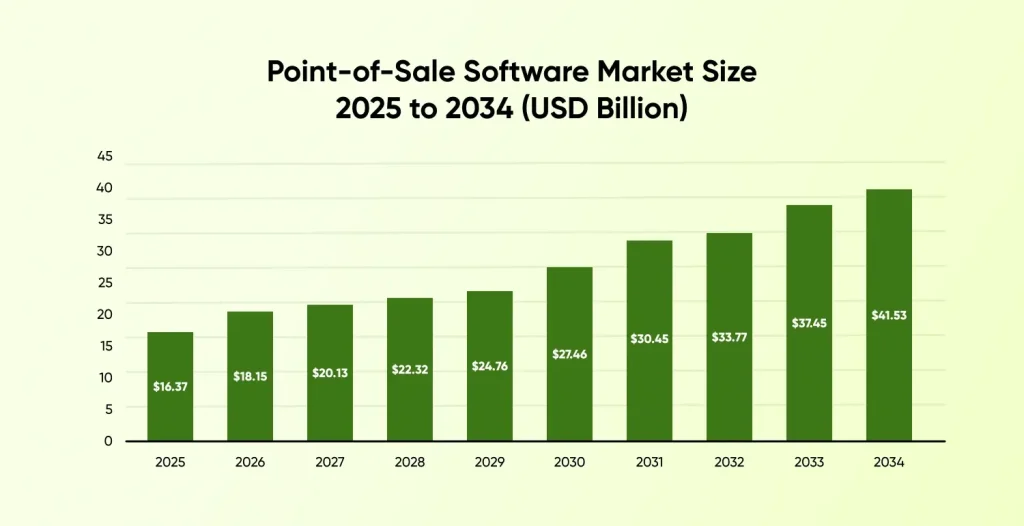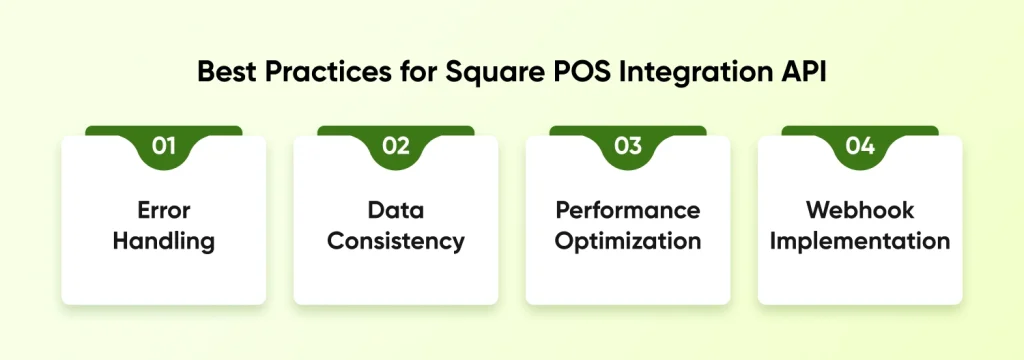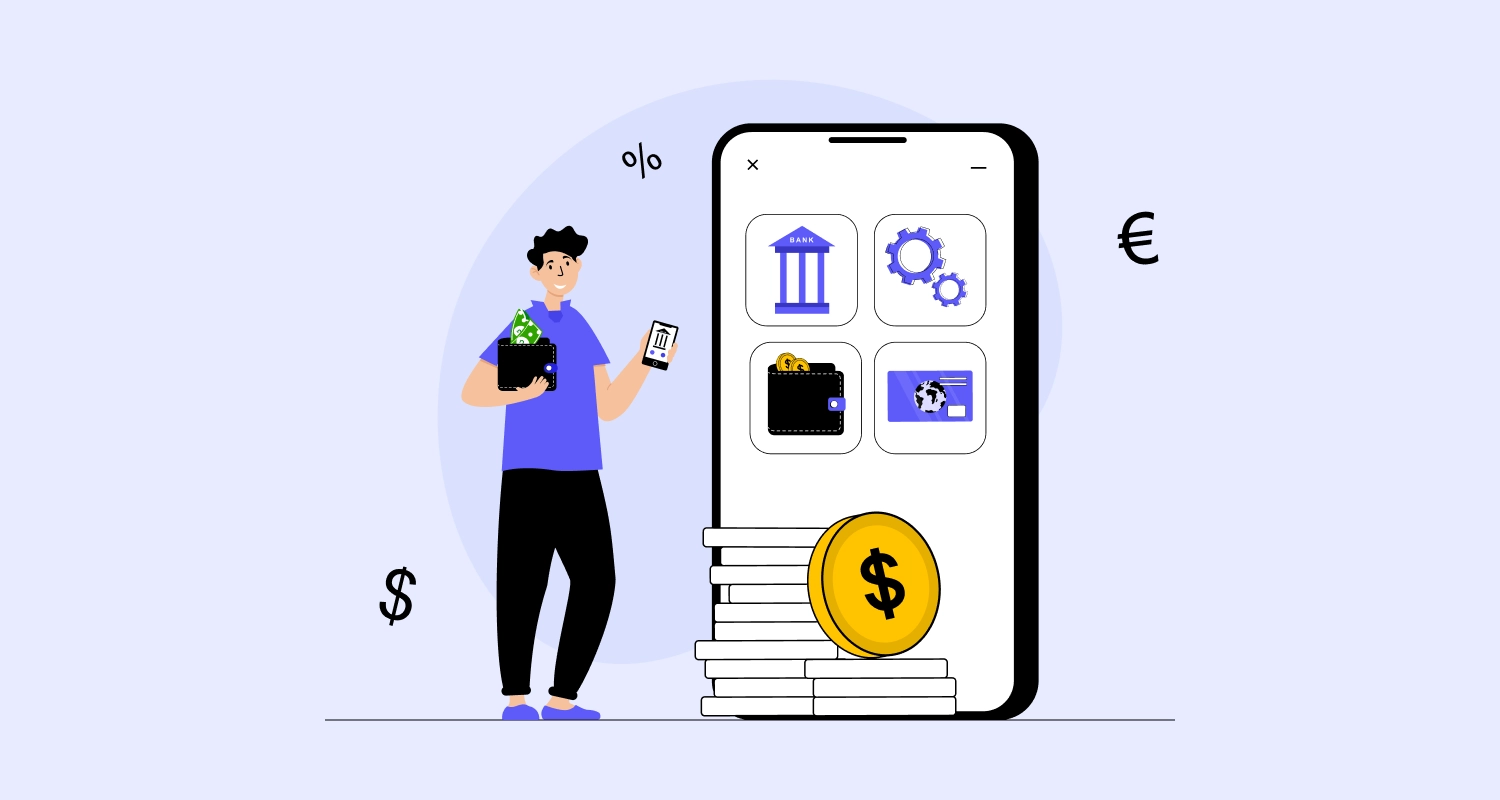Quick Summary: This guide covers how to master Square POS API integration for seamless retail operations across online and in-store systems. It outlines key APIs (Payments, Orders, Catalog, etc.), setup steps, real-world .NET code, and common use cases like e-commerce and accounting integration. It also includes best practices, testing tips, and team requirements, everything developers need to build unified, efficient retail experiences.
The ultimate retail nightmare in today’s time is when your business systems don’t work together smoothly. Many organizations have specialized systems for handling different aspects of the retail front such as managing online sales, in-store checkouts, and another one for inventory management.
This puts a lot of pressure on the developers who are stuck in trying to glue all of these special software together. If you are building a retail app from scratch, or modifying the store’s tech stack, you already have your research on the importance of creating mission-critical unified systems that are optimized for speed, accuracy, and customer experience.
This is where Square POS API integration helps. It provides developers with the hooks needed for connecting payments, customer data, inventory, and sales data across online and brick-and-mortar stores. This guide is aimed towards understanding how to use Square API for building smooth retail flows that can bring all your channels under one roof.
The Rising Popularity of Point-of-Sale Software: Market Size and Forecast

The Point of sales software market is valued at USD 16.3 billion in 2025. It is expected to reach a valuation of $41.53 billion by the year 2034. Asia Pacific recorded the highest market share of 35% back in 2024. Most companies leaned towards on-premise deployment, making a total of 65.8% share.
What is Square POS API Integration?
Square POS API integration enables developers to connect Square’s point-of-sale system with other applications and services. The API gives programmatic access to Square’s core functionality like payment processing, inventory management, customer data, and transaction records.
The Square API follows REST architecture principles and uses OAuth 2.0 for authentication. Applications can securely access merchant data without having to risk storing sensitive credentials. The merchants maintain control over what data they share.
Key Benefits of Square API Integration
Automated Data Synchronization
When customers make purchases, inventory levels update automatically across all connected systems. Your e-commerce platform, inventory management tools and accounting software stay synchronized without manual intervention.
Unified Customer Experience
Customer data flows seamlessly between your Square POS and other customer touchpoints. Purchase history, loyalty points, and preferences remain consistent whether customers shop online or in-store.
Streamlined Operations
Instead of managing multiple disconnected systems, Square API integration unifies a single source of truth for your business data. This reduces errors, saves time, and provides better insights into business performance.
Simplified Payment Processing
SquareAPI provides automatic and seamless integration of payment processing capabilities directly into the clients web applications, mobile apps, and other products.
Eliminates Need for Merchant Account
One of the biggest benefits businesses get from using Square POS API is the ability of directly using their services without needing to create a merchant account or payment gateways.
How to Build a Square API Integration
Step 1: Create a Square Developer Account
- Go to Square developer page
- Sign in or click “Sign Up” to create a free developer account.
- After logging in, you’ll be taken to the Developer Dashboard.
Step 2: Create a New Application
- In the Developer Dashboard, click “Create Application.”
- Give your app a name like “My POS Integration.”
- Square will then generate the following for your app:
- Application ID
- Access Token
- Location ID
You can also switch between:
- Sandbox mode which is used for testing
- Production mode ideal for real transactions
Step 3: Set Up Your Square API Environment
- Use the Sandbox Token when testing. This helps you avoid real charges.
- Use the Production Access Token when going live.
Step 4: Install Square SDK in .NET
- Install the official Square SDK using NuGet:
Install-Package Square- Or using .NET CLI:
dotnet add package SquareStep 5: Initialize Square Client
using Square;
using Square.Apis;
var client = new SquareClient.Builder() .Environment(Square.Environment.Sandbox) // or Production .AccessToken("YOUR_ACCESS_TOKEN") .Build();
Working with Core Square POS APIs: Real-World Code Examples
| API Name | What It Does | Common Use Examples |
| Payments API | Processes financial transactions and secures payment methods | E-commerce checkout flows, recurring billing, transaction reversals |
| Catalog API | Organizes merchandise data and stock levels | Item management, pricing control, product categorization |
| Customers API | Maintains customer records and data | User profiles, purchase history, marketing campaigns |
| Orders API | Tracks order status from start to finish | Order fulfillment, delivery tracking, pickup coordination |
| Commerce API | Coordinates complete shopping workflows | Multi-channel sales, inventory sync, reservation systems |
| Staff API | Controls employee access and scheduling | Time tracking, role management, payroll integration |
Payments API
Handles transaction processing, refunds, and payment method management. This is essential for any payment API integration services that needs to process card transactions, digital wallets, or stored payment methods securely.
var body = new CreatePaymentRequest( sourceId: "cnon:card-nonce-ok", idempotencyKey: Guid.NewGuid().ToString(), amountMoney: new Money { Amount = 2500, Currency = "USD" }
);
var result = await client.PaymentsApi.CreatePaymentAsync(body);Catalog API
Manages product inventory including items, variations, categories, and pricing. Critical for businesses that need to sync inventory across multiple sales channels or integrate with specialized inventory management systems.
var itemData = new CatalogItem
{ Name = "Coffee", Description = "Black Coffee", Variations = new List<CatalogObject> { ... }
};
var objectItem = new CatalogObject("ITEM", "#COFFEE", itemData);
await client.CatalogApi.UpsertCatalogObjectAsync(new UpsertCatalogObjectRequest(Guid.NewGuid().ToString(), objectItem));Customers API
Centralizes customer information across all touchpoints. This API stores information on customer profiles, their purchase history, loyalty program data and other such metrics. This enables customer segmentation that can be a great strategic asset for targetted marketing.
var customerRequest = new CreateCustomerRequest
{ GivenName = "John", FamilyName = "Doe", EmailAddress = "john@example.com", PhoneNumber = "+1234567890"
};
var result = await client.CustomersApi.CreateCustomerAsync(customerRequest);Orders API
This Square API integration provides complete order management services from initalization through fulfillment. It is one of the must-have API integration services for businesses that struggle with managing online and offline fulfillment delivery services.
var order = new Order(locationId)
{ LineItems = new List<OrderLineItem> { new OrderLineItem("1") { Name = "Coffee", BasePriceMoney = new Money(Amount: 300, Currency: "USD") } }
};
var createOrderRequest = new CreateOrderRequest
{ Order = order, IdempotencyKey = Guid.NewGuid().ToString()
};
var result = await client.OrdersApi.CreateOrderAsync(createOrderRequest);Commerce API
This Square API integration will manage everything related to your Commerce needs. Starting from order processing, to catalog management, and other use cases like inventory tracking, it helps businesses unify all transactions from various mediums.
var body = new CreateCheckoutRequest( idempotencyKey: Guid.NewGuid().ToString(), order: new Order(locationId) { LineItems = new List<OrderLineItem> { new OrderLineItem("1") { Name = "T-shirt", BasePriceMoney = new Money(2500, "USD") } } }
);
var checkout = await client.CheckoutApi.CreateCheckoutAsync(locationId, body);Staff API
Staff API is ideal if you work with large global teams that need to be assigned different access as per their roles and are looking for ways to streamline their compensation and other aspects. Businesses can initiate time tracking, centralized staff management and other such features to manage their large teams.
var teamMember = new TeamMember
{ GivenName = "Alice", FamilyName = "Smith", EmailAddress = "alice@example.com"
};
var result = await client.TeamApi.CreateTeamMemberAsync( new CreateTeamMemberRequest(Guid.NewGuid().ToString(), teamMember));Common POS API Integration Use Cases and Scenarios
| Integration Type | Purpose | Key Features | Use Cases |
| E-commerce Integration | Connect online stores (Shopify, WooCommerce) with Square for unified order/payment flow | – Accept online payments- Sync inventory/catalog- Track orders in Square | – Unified sales tracking- Online refunds- Enable Square checkout |
| Accounting Integration | Sync POS transactions (sales, tax, refunds) with accounting tools (QuickBooks, Xero) | – Export sales data- Reconcile taxes/fees- Automate invoicing | – Real-time sync- Ledger automation- Simplified tax filing |
| Retail POS Integration | Enable robust POS features for physical retail stores | – Barcode checkout- Inventory/employee tracking- Multi-location support | – Fast in-store checkout- Price management- Staff performance tracking |
| Custom POS Solutions | Build tailored POS systems on Square’s infrastructure | – Custom UI/workflows- Loyalty, receipts, split payments- Control over orders/checkout | – Kiosks & handheld POS- ERP/logistics integration- Omnichannel flow |
E-commerce API Integration
Point of sale ecommerce integration connects online stores with physical retail operations. When someone purchases a product online, inventory automatically updates in your Square POS system. Similarly, in-store purchases reduce available inventory for online shoppers.
var paymentRequest = new CreatePaymentRequest( sourceId: "web-card-nonce", idempotencyKey: Guid.NewGuid().ToString(), amountMoney: new Money(Amount: 5000, Currency: "USD")
);
var result = await client.PaymentsApi.CreatePaymentAsync(paymentRequest);Most ecommerce software development projects require this integration to avoid overselling and maintain accurate inventory levels across all sales channels.
Accounting POS System Integration
Financial data flows automatically from Square to accounting platforms. Daily sales summarize important details like tax information, and fee breakdowns transfer directly to your accounting system, removing manual data entry and reducing errors during financial reporting.
// Example: Fetch daily sales for export to accounting
var payments = await client.PaymentsApi.ListPaymentsAsync(beginTime: "2023-01-01T00:00:00Z");Retail POS Integration
When you connect Square Retail POS to your CRM, customer info stays current without any extra work. Each time someone buys something, their profile gets updated right away with what they bought, what they like, and how they interact with your store. This makes it much easier to send them relevant offers and give them better customer service.
var catalogItem = new CatalogItem
{ Name = "T-Shirt", Description = "Cotton T-Shirt", Variations = new List<CatalogObject> { /* price/size variants */ }
};
var result = await client.CatalogApi.UpsertCatalogObjectAsync( new UpsertCatalogObjectRequest(Guid.NewGuid().ToString(), new CatalogObject("ITEM", "#T-SHIRT", catalogItem)));Custom POS Solutions
Building custom POS solutions on Square’s infrastructure gives you flexibility while leveraging Square’s payment processing and compliance capabilities. You can create industry-specific interfaces or add custom workflow logic while delegating payment processing to Square.
var order = new Order(locationId)
{ LineItems = new List<OrderLineItem> { new OrderLineItem("1") { Name = "Custom Item", BasePriceMoney = new Money(1000, "USD") } }
};
var createOrderRequest = new CreateOrderRequest
{ Order = order, IdempotencyKey = Guid.NewGuid().ToString()
};
var result = await client.OrdersApi.CreateOrderAsync(createOrderRequest);Best Practices for Square POS Integration API

Error Handling
Implement proper error handling with exponential backoff for retries. Distinguish between temporary failures that warrant retries and permanent failures that require different handling. Rate limiting responses include headers telling you when to retry.
Data Consistency
Keep data consistent across multiple systems by implementing conflict resolution strategies. For example, if inventory gets updated in both systems simultaneously, establish clear rules about which change takes precedence.
Performance Optimization
Use batch operations where possible, cache frequently accessed data, and only sync the data you actually need. The Square API supports filtering and pagination options to drop-down bandwidth usage and improve response times.
Webhook Implementation
Purpose: Set up real-time notifications from Square to your backend systems.
Square webhooks help you stay on top of things automatically. When a customer buys something, Square immediately notifies your other systems – whether that’s your inventory tracker, customer database, or reporting dashboard.
[HttpPost("square-webhook")]
public async Task<IActionResult> HandleWebhook()
{ using var reader = new StreamReader(Request.Body); var body = await reader.ReadToEndAsync(); // Verify signature (optional but recommended) var isValid = VerifySquareSignature(Request.Headers["x-square-signature"], body); if (!isValid) return Unauthorized(); var eventData = JsonConvert.DeserializeObject<SquareWebhookEvent>(body); // Handle event type (e.g., payment.updated, customer.created) if (eventData.Type == "payment.created") { // Update your system accordingly } return Ok();
}Testing Your POS Integration API
Sandbox Testing
Create 360 different test scenarios to make sure everything works properly. Test normal day-to-day stuff, weird edge cases, and what happens when things break. Try out busy periods with lots of transactions, network outages, login failures, and bad data. Do all this testing in the sandbox so you can fix problems before real customers run into them.
Sandbox testing is able to help:
- Try successful and failed payments
- Test timeouts and bad data
- See how your system handles heavy traffic
var client = new SquareClient.Builder() .Environment(Square.Environment.Sandbox) .AccessToken("SANDBOX_ACCESS_TOKEN") .Build();Production Deployment
Roll out your integration when things are slow – like after hours or during your quietest days. Make sure you have a backup plan to quickly reverse the changes if something breaks.
Best Practices:
- Only go live after testing everything in sandbox first
- Keep your login tokens safe and watch how fast webhooks respond
- Set up alerts so you know right away when something’s wrong
var client = new SquareClient.Builder() .Environment(Square.Environment.Production) .AccessToken("PRODUCTION_ACCESS_TOKEN") .Build();Mobile App Development Considerations
Mobile app development services for point of sale integration need to handle offline scenarios, varying network conditions, and different device capabilities. Square’s mobile SDKs provide tools for building native mobile experiences that work reliably in retail environments.
How to Build Your Square API Integration Team?
Required Skills
When you need to hire dedicated developers for Square integration projects, favour candidates with experience in payment processing and inventory management.
Here are certain skills your potential developer or team must have:
| Technical Skills for Square POS Integration | Soft Skills for Square POS Integration |
| POS Software Proficiency | Providing Excellent Customer Service |
| Understanding of Payment Processing | Clear Communication |
| Inventory Management with Square System | Problem-Solving Skills |
| Ability to Troubleshoot Hardware | Adaptability to New Changes |
Reliable Web Development Companies
Many businesses use web development services from companies that specialize in retail integrations. These partners bring subject matter expertise and are able to speed up the project timelines significantly while helping you avoid common pitfalls.
Monitoring and Maintenance of POS Integration
API Usage Monitoring
Track API usage patterns to identify optimization opportunities and potential issues. Keep a record of response times, error rates, and other factors to keep an eye on performance, and results.
Staying Updated with Current Changes
Square rolls out API updates pretty regularly with new features and bug fixes. Keep an eye on their developer announcements and emails so you know what’s coming and can update your code when needed.
Common Square POS API Integration Challenges
| Challenge | Description | Solution Approach |
| Rate Limiting | Square implements rate limits for API stability | Design integration to respect limits, implement proper retry logic |
| Data Mapping | Different systems structure data differently | Plan data mapping strategy for complex data like product variations |
| Multi-Location Management | Location-specific data with consolidated views | Account for location-specific scoping in API operations |
Rate Limiting
Square implements rate limits to ensure API stability. Design your integration to respect these limits and implement proper retry logic when you hit rate limits.
Data Mapping
Different systems often structure data differently. Plan how you’ll map data between Square and your integrated systems, especially for complex data like product variations or customer attributes.
Multi-Location Management
Businesses with various locations need to consider the management for location-specific data while providing consolidated views when appropriate. The Square API scopes most operations to specific location IDs.
Final Words
Square POS API Integration services help retail businesses connect their separate systems into one smooth operation. Getting the most out of Square’s API means understanding both what it can do technically and how your business actually works day-to-day.
Success Factors:
- Know exactly what you want to achieve first
- Build piece by piece, not all at once
- Keep things stable and easy to use
- Pick the integration method that fits your situation
Start with clear business goals, develop the project in stages, and prioritize reliability and user experience throughout. When done right, integrating Square POS APIs can give your business a strong edge and grow with you as your needs expand.
FAQs on Square POS API Integration
Is Square a Good POS System?
Square is a solid POS system for small to medium businesses, offering competitive pricing, easy setup, and comprehensive features including payments, inventory, and analytics. It’s particularly strong for retail and restaurants, though some enterprise businesses may need more advanced customization options.
How Do We Integrate POS With Websites?
Most modern POS systems like Square offer APIs and plugins that sync inventory, orders, and customer data between brick-and-mortar stores and online stores in real-time. You can use webhooks, REST APIs, or e-commerce platform integrations (Shopify, WooCommerce) to maintain unified product catalogs and customer experiences.
What Is Square POS and How Does Its API Work?
Square POS is a cloud-based POS that handles payments, inventory, and customer management, with hardware options from mobile card readers to complete register setups. Its REST API allows developers to integrate Square’s payment processing, inventory management, customer data, and reporting features into custom applications using standard HTTP requests.
Is Square POS API Suitable for Omnichannel Retail Experiences?
Square’s API supports omnichannel retail with a unified inventory management system that includes customer profiles, and order processing capabilities across online and offline channels. The API enables real-time synchronization of product data, pricing, and stock levels between your website, mobile app, and physical store locations.
Can I Customize the Square POS Experience for My Business Needs?
Square offers moderate customization through its dashboard settings, custom receipts, employee permissions, and third-party app integrations from their marketplace. For deeper customization, you can use Square’s APIs to build custom applications, though the core POS interface itself has limited visual customization options compared to some enterprise solutions.







